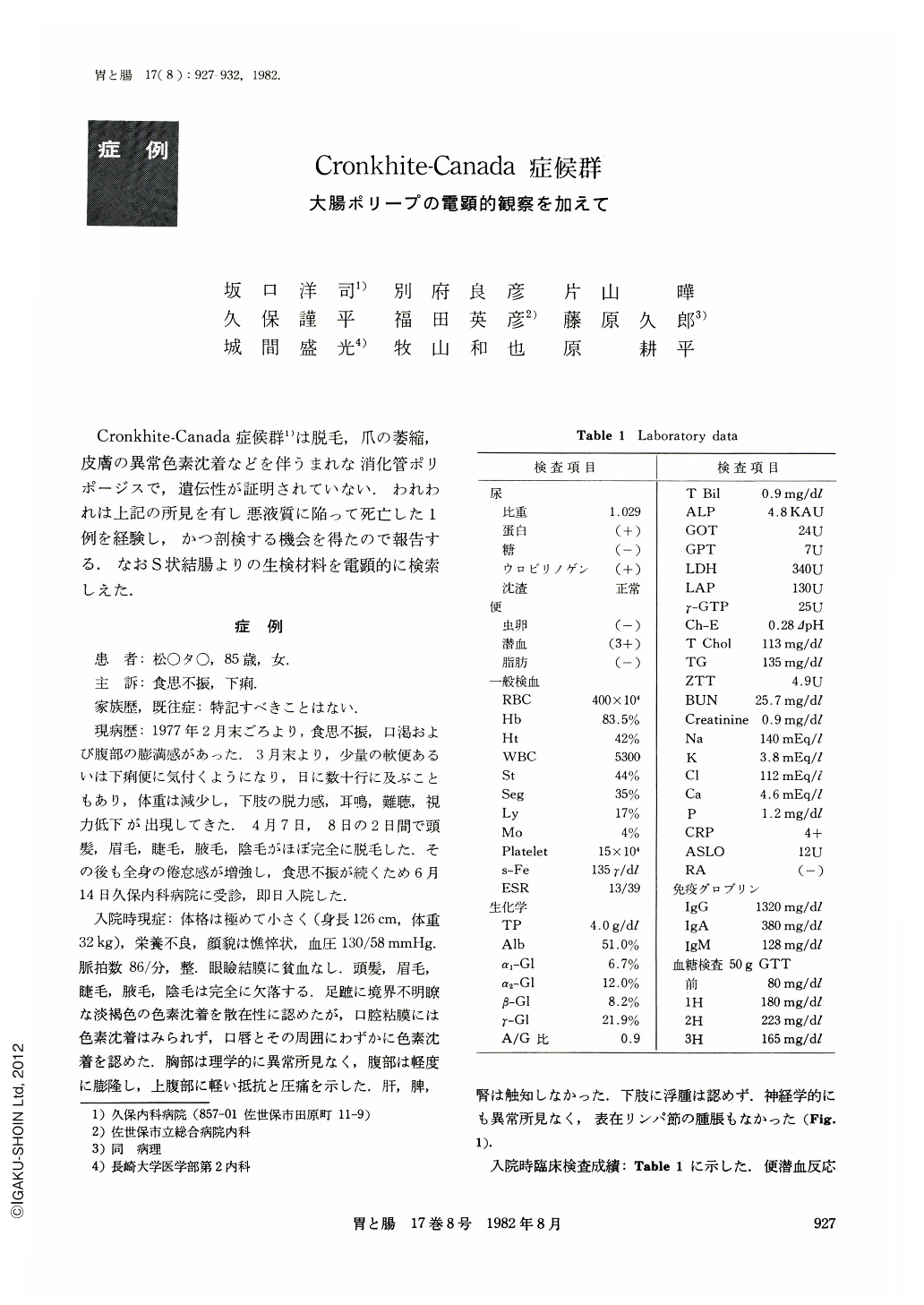Japanese
English
- 有料閲覧
- Abstract 文献概要
- 1ページ目 Look Inside
Cronkhite-Canada症候群1)は脱毛,爪の萎縮,皮膚の異常色素沈着などを伴うまれな消化管ポリポージスで,遺伝性が証明されていない.われわれは上記の所見を有し悪液質に陥って死亡した1例を経験し,かつ剖検する機会を得たので報告する.なおS状結腸よりの生検材料を電顕的に検索しえた.
An 85-year-old woman was admitted to the hospital in June 1977 because of anorexia and diarrhea lasting through the past three or four months. On admission she was an emaciated, small-statured woman with generalized total alopecia (head hair, eyebrow, axillary and pubic hairs), atrophy of the finger-and toe-nails and skin pigmentation on the soles (Fig. 1). Laboratory investigation showed marked hypoproteinemia with total protein of 4.0 g/dl. Roentgenographic and endoscopic studies revealed diffuse polyposis throughout the stomach, small intestine, colon and rectum (Fig. 2~4). She had deteriorated progressively and expired about six months after the onset of the symptoms.
Histological examination of each polyp in the gastrointestinal polyposis on autopsy disclosed conspicuous stromal inflammatory infiltrates, hyperplasia of the epithelial cells and cystic dilatation of the glands which contained PAS positive mucin (Fig. 6). No malignant change was detected in any area.
Since fresh specimens had been obtained from the sigmoid colon by means of a colonofiberscope during her admission, an electron-microscopic examination was performed. There were two different types of secretory granules in the cytoplasm of the goblet cells: one was “common type”, with mucinogen granules which had uniform electron density, and the other had usually one electron-dense inclusion in the mucinogen granules (Fig. 7). There were many small vesicles surrounded by a limiting membrane in the supra-nuclear cytoplasm of principal cells (Fig. 8). These vesicles again sometimes had dense inclusions resembling those in the goblet cells.

Copyright © 1982, Igaku-Shoin Ltd. All rights reserved.


